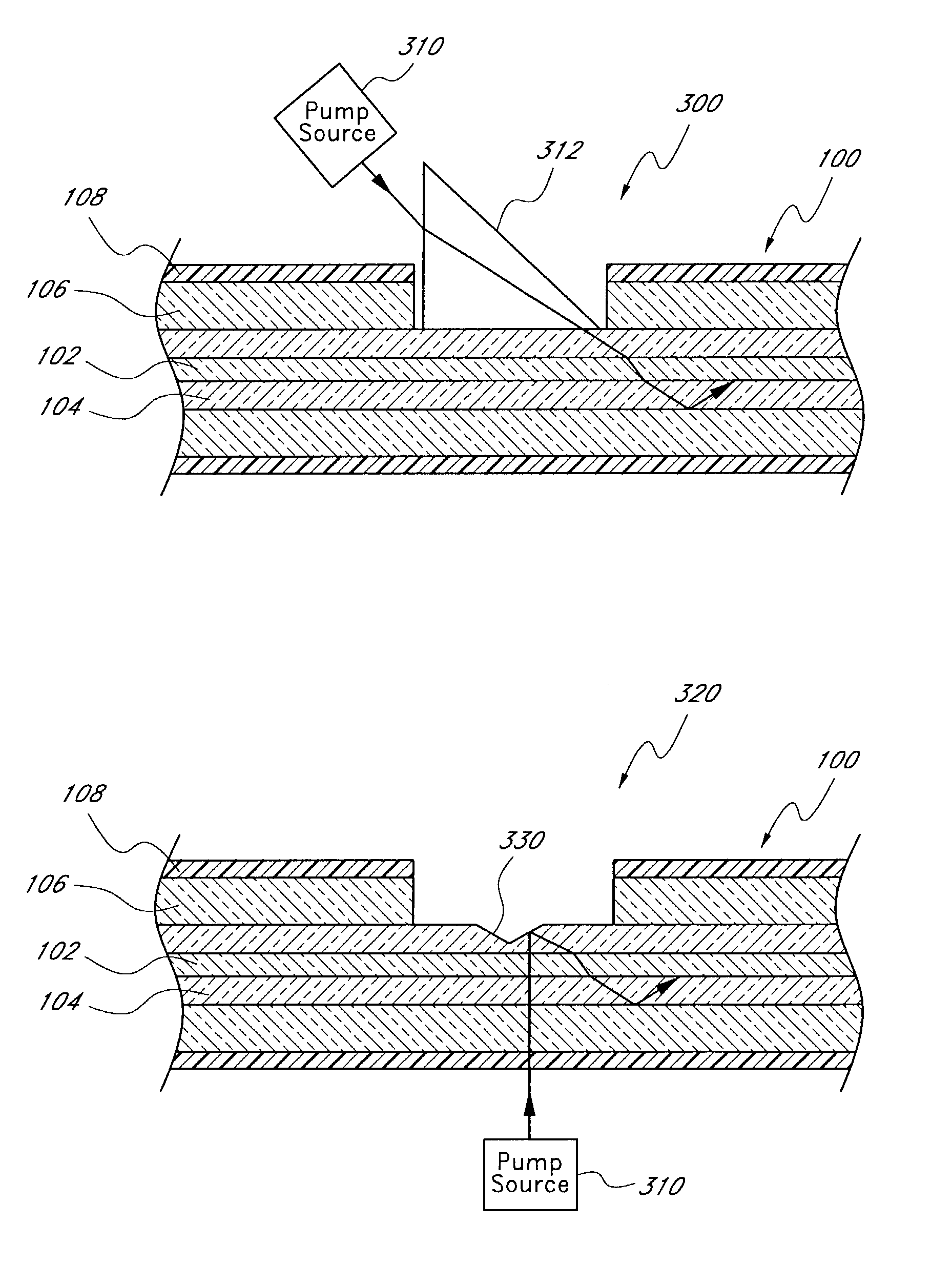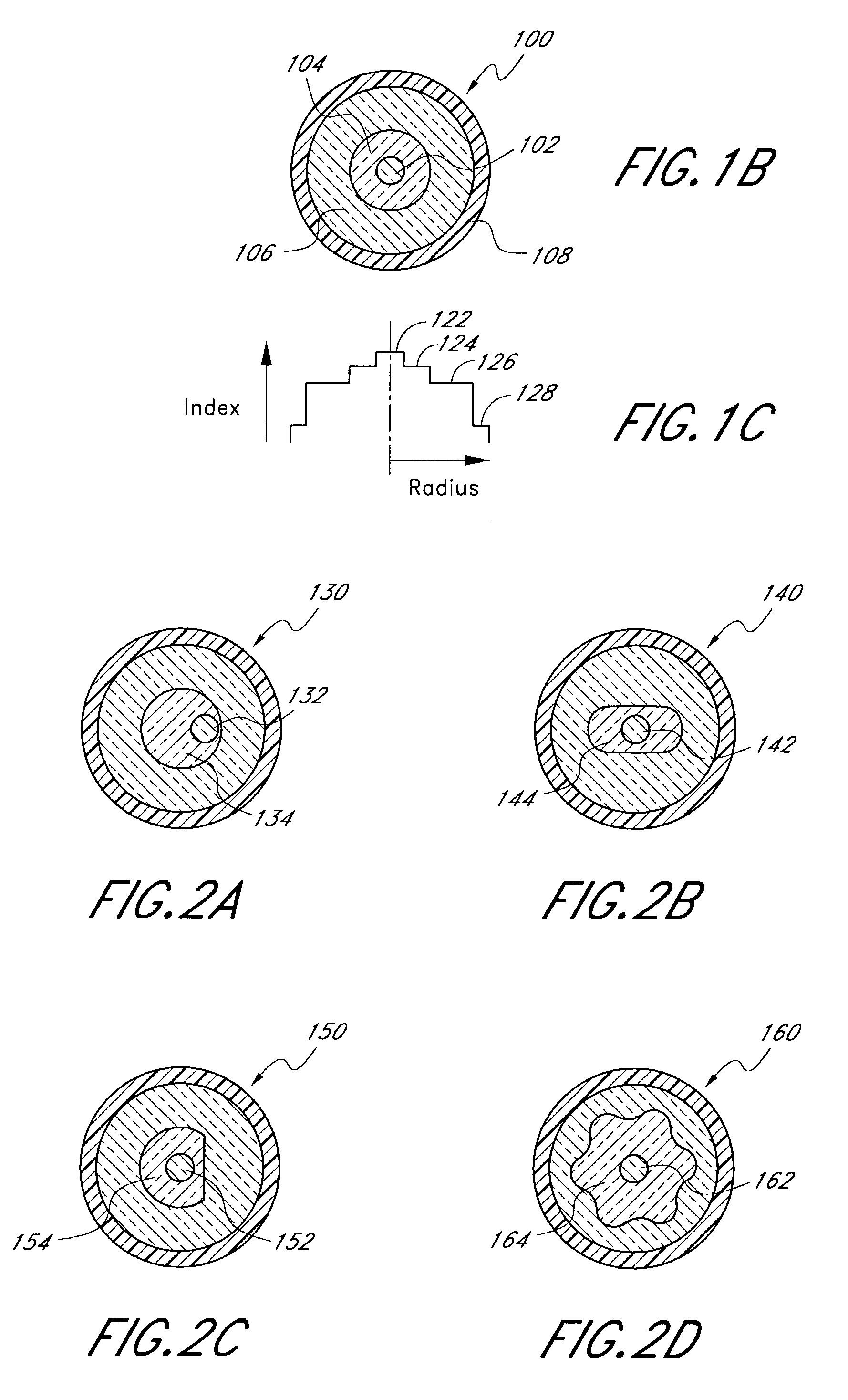Double-clad fiber lasers and amplifiers having long-period fiber gratings
a technology of optical fiber and amplifier, which is applied in the field of optical fiber lasers and optical fiber amplifiers, can solve the problems of better noise figure, and achieve the effects of improving noise figure, uniform pumping, and increasing coupling
- Summary
- Abstract
- Description
- Claims
- Application Information
AI Technical Summary
Benefits of technology
Problems solved by technology
Method used
Image
Examples
Embodiment Construction
[0060]An exemplary double-clad fiber 100 is illustrated in perspective in FIG. 1A and in cross section in FIG. 1B. The double-clad fiber 100 comprises a single-mode core 102 having a generally circular cross section or other shapes, such as, for example, elliptical to produce a polarization-maintaining fiber. The core 102 is surrounded by a first (or inner) cladding 104, which also has a generally circular cross section. The core 102 is substantially centered within the inner cladding 104. The inner cladding 104 is surrounded by a second (or outer) cladding 106, which also has a generally circular cross section. The inner cladding 104 is centered within the outer cladding 106. The outer cladding 106 is surrounded by one or more protective coatings (e.g., a protective jacket) 108.
[0061]As illustrated by an index profile in FIG. 1C, the core 102 has a first refractive index 122. The inner cladding 104 has a second refractive index 124, which is lower than the first refractive index 12...
PUM
 Login to View More
Login to View More Abstract
Description
Claims
Application Information
 Login to View More
Login to View More - R&D
- Intellectual Property
- Life Sciences
- Materials
- Tech Scout
- Unparalleled Data Quality
- Higher Quality Content
- 60% Fewer Hallucinations
Browse by: Latest US Patents, China's latest patents, Technical Efficacy Thesaurus, Application Domain, Technology Topic, Popular Technical Reports.
© 2025 PatSnap. All rights reserved.Legal|Privacy policy|Modern Slavery Act Transparency Statement|Sitemap|About US| Contact US: help@patsnap.com



